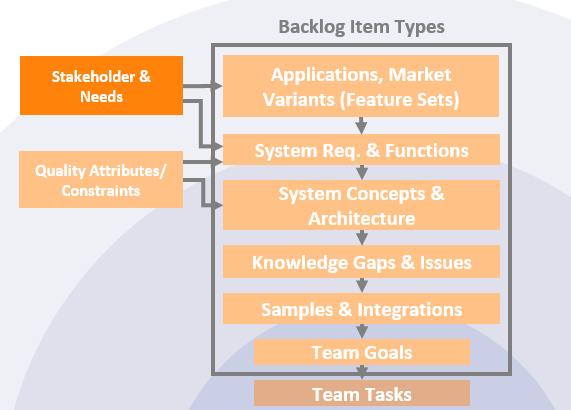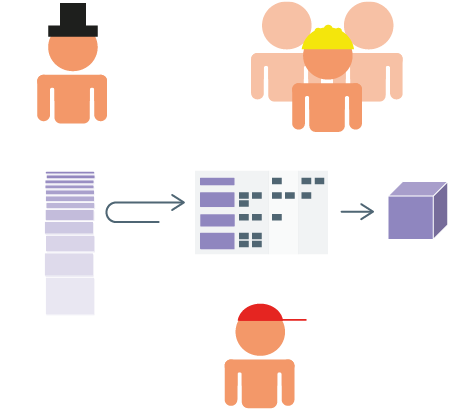Stakeholders are all persons and groups of people affected by a system, as well as everyone directly interested or involved in the product. Stakeholders are invited to the reviews at all levels and can optionally be invited to backlog refinement meetings to explain their requirements.
In order to identify stakeholders, the P4 framework uses two different life cycles as conceptual guidelines. these are
- the product life Cycle (from the idea to the end of product maintenance) and
- the single piece life Cycle (from purchasing the raw material to recycling)
The different stakeholders (= interest groups) can be identified for each product or system.
Product life cycle

Single piece life cycle

The P4 framework distinguishes three groups of stakeholders, which are assigned to the three areas
- Market & Business : Users, Customers and Sales
- Technology & Architecture : Suppliers, Supply Chain & Production
- Infrastructure & processes : Managers of other areas of the Organization
Stakeholer Needs
Stakeholer Needs are the needs of the stakeholders identified in the first step. They do not represent actual Backlog Item types, but they do allow the benefits of new or changed requirements to become clearer. They represent the top level of requirements and should be constantly updated (not only when new product developments are started). This is usually easy because Stakeholer Needs change relatively slowly.
.
\r\n
Further suitable links:
| Events | Roles | Groups | Artifacts |
| Team Backlog Refinement
. . |
Team Product Owner
. . |
Team Product Owner Group
. |
Team Backlog
. Usable Knowledge & System Increment . |


